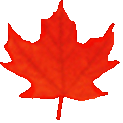
Common menu bar links
Institutional Links
-
Translation Bureau
Language Portal of Canada
-
TERMIUM Plus®
-
Chapters
- + Abbreviations
- + Hyphenation: Compounding and Word Division
- + Spelling
- + Capitalization
- + Numerical Expressions
- + Italics
- + Punctuation
- + Quotations and Quotation Marks
- + Reference Matter
- + Letters and Memorandums
- - Close Reports and Minutes
- Reports, General
- Preparation
- Format
- Letter of transmittal or preface
- Title page
- Table of contents
- Abstract or summary
- Introduction to report
- Findings and discussion
- Ending
- Appendixes
- Glossary
- References
- Illustrations
- Tables and graphs
- Headings
- Margins
- Spacing
- Pagination
- Underlining
- Mathematics in reports
- Minutes, General
- Agenda
- Model agenda
- Writing of minutes
- Indirect speech
- Model minutes
- + Usage
- + Plain Language
- + Elimination of Stereotyping in Written Communications
- + Geographical Names
- + Revision and Proofreading
- + French Typographical Rules
Proactive Disclosure
Important notice
The Canadian Style has been archived and won’t be updated before it is permanently deleted.
For the most up-to-date content, please consult Writing Tips Plus, which combines content from Writing Tips and The Canadian Style. And don’t forget to update your bookmarks!
Search and Functionalities Area
11.22 Minutes, General
The minutes of a meeting are a record of the circumstances of the meeting, including the names of the participants, the topics discussed and the decisions reached. The minutes should include all essential information in as concise a form as possible. Special attention should be paid to the wording of resolutions, motions and other decisions, particularly if there is a chance that there will be differences of opinion on what was resolved, moved or decided. If it is a formal meeting, all motions must be written out verbatim.
11.23 Agenda
The agenda lists the order of business for a meeting and may include the items listed below, in the following order:
- call to order by presiding officer
- roll call
- welcoming of new members and guests
- reading and adoption of the agenda
- reading and adoption of the minutes of the previous meeting
- business arising out of the minutes
- other old business
- reading of correspondence
- reports of officers
- committee reports
- new business
- nominations and elections
- announcements (including date, time and place of next meeting)
- adjournment
If the agenda is short and few decisions are to be made, it can be incorporated into the minutes. If the agenda is long and many points are to be discussed and acted on, the agenda may be omitted and the following style adopted: a wide column at the left for the point discussed, and a narrower column at the right for the person or body responsible for carrying out any action decided on (see 11.27 Model minutes). The points are numbered and may be given subject headings.
© Public Services and Procurement Canada, 2024
TERMIUM Plus®, the Government of Canada's terminology and linguistic data bank
Writing tools – The Canadian Style
A product of the Translation Bureau


